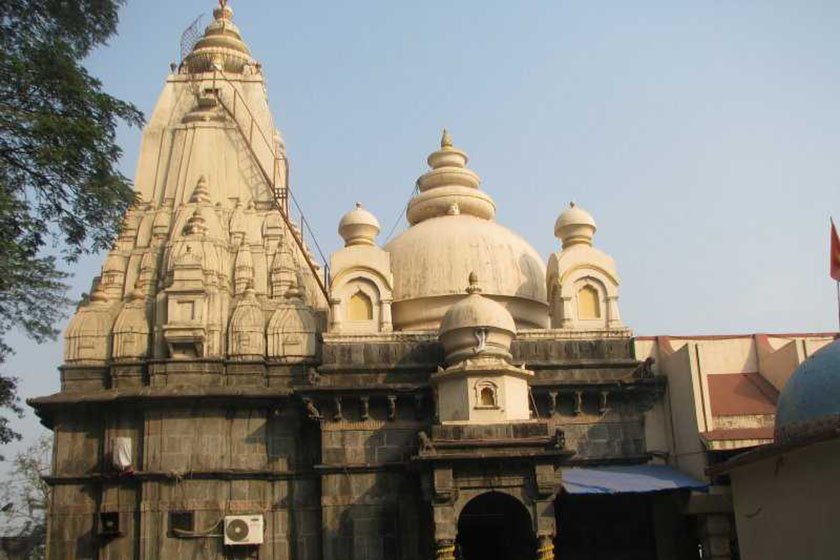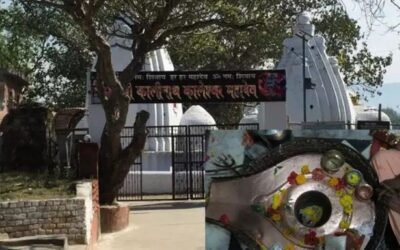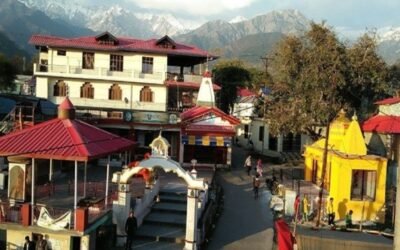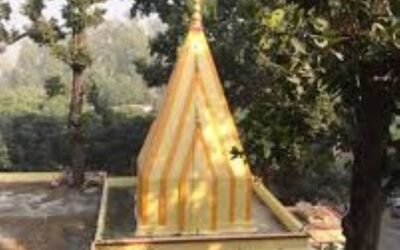Tucked into the vibrant lanes of Jansali Bazaar, the Vajreshwari Temple is one of Chamba’s oldest and most revered shrines. Dedicated to Goddess Vajreshwari, a fierce manifestation of Parvati, this temple is a stunning example of Shikhara-style architecture, echoing with centuries of devotion, myth, and resilience.
🌄 Location & Accessibility
- Location: Jansali Bazaar, Chamba town, Himachal Pradesh – 176310
- Altitude: ~996 meters above sea level
- How to Reach:
- By Road: Easily accessible by foot or vehicle from anywhere in Chamba town
- By Rail: Nearest station – Pathankot (120 km)
- By Air: Gaggal Airport, Kangra (~180 km)
🛕 Mythological Significance
According to legend, after Goddess Sati immolated herself, Lord Shiva wandered the universe in grief. To restore balance, Lord Vishnu dismembered her body, and her parts fell across the subcontinent—creating the Shakti Peethas. The eyes (vajra) of the goddess are believed to have fallen at this site, giving rise to Vajreshwari, the “Goddess of Lightning.”
Another tale recounts that the Pandavas, during their exile, were instructed in a dream by the goddess to build a shrine here to protect themselves from destruction.
🕉️ Deity & Worship
The Vajreshwari Temple is dedicated to Goddess Vajreshwari, a fierce manifestation of Goddess Parvati, revered as the Goddess of Lightning and Power. She is worshipped here in her pindi form, a sacred stone symbolizing her divine presence. The idol is often associated with Durga in her warrior aspect, seated on a lion, and flanked by Vishnu in his three-faced form—human, boar, and lion—highlighting the temple’s deep mythological resonance.
Worship rituals include daily aartis, incense offerings, red cloth, and ghee lamps, with devotees seeking protection from calamities, strength in adversity, and divine justice. The temple is especially vibrant during Navratri and Amavasya in March, when large fairs and special pujas are held in her honor. Pilgrims often offer silver tridents, coconuts, and bangles, invoking the goddess’s blessings for courage, fertility, and spiritual awakening.
🏛️ Architectural Highlights
- Built in Shikhara style, with a soaring spire and intricate carvings
- The entrance is guarded by two massive stone lions, symbolizing protection
- A Nagarkhana (Drum House) crowns the gateway, once used to announce rituals
- The sanctum houses a pindi form of Goddess Vajreshwari, alongside a rare idol of Lord Vishnu with three faces—human, boar, and lion
- The outer walls bear 18 inscriptions, and the pillars are etched with miniature deities and floral motifs
🎉 Festivals & Celebrations
- Amavasya Fair (March): The most celebrated event, marked by ritual worship, folk performances, and community feasts
- Navratri (Chaitra & Ashwin): The temple is adorned with lights, and devotees gather for aarti, bhajans, and offerings
- Daily Worship: Devotees offer red cloth, coconuts, and incense, seeking protection and blessings
🏞️ Nearby Attractions
- Laxmi Narayan Temple Complex: Chamba’s oldest and grandest temple cluster
- Champavati Temple: A shrine of royal remorse and divine grace
- Shri Hari Rai Temple: Known for its three-faced Vishnu idol
- Bhuri Singh Museum: A treasure trove of Pahari art and manuscripts
- Chaugan Ground: A cultural hub for fairs and evening strolls
🙏 Spiritual Experience
The Vajreshwari Temple is not just a shrine—it’s a living chronicle of divine power and artistic brilliance. As you step through its lion-guarded gate and gaze up at the Shikhara spire, you feel the presence of a goddess who has weathered time, invasion, and earthquake—yet still stands radiant, fierce, and full of grace.




